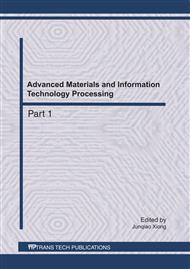p.247
p.253
p.258
p.264
p.270
p.275
p.281
p.285
p.291
Regression Analysis on the Evaluation Index for Undergraduate's Grades in C Language
Abstract:
In order for undergraduates to master basic skills of computer technology, the grades in C language be evaluated as the important indicator of the level of a college computer basic education. This paper exploits the data from a cohort of the Jianghan University undergraduates to explore the extent to which the impacts of the evaluation index are specific to grades in C language. Using regression techniques, the paper tries to provide some references for colleges to improve the basic education of computer.
Info:
Periodical:
Pages:
270-274
Citation:
Online since:
July 2011
Authors:
Keywords:
Price:
Сopyright:
© 2011 Trans Tech Publications Ltd. All Rights Reserved
Share:
Citation:


